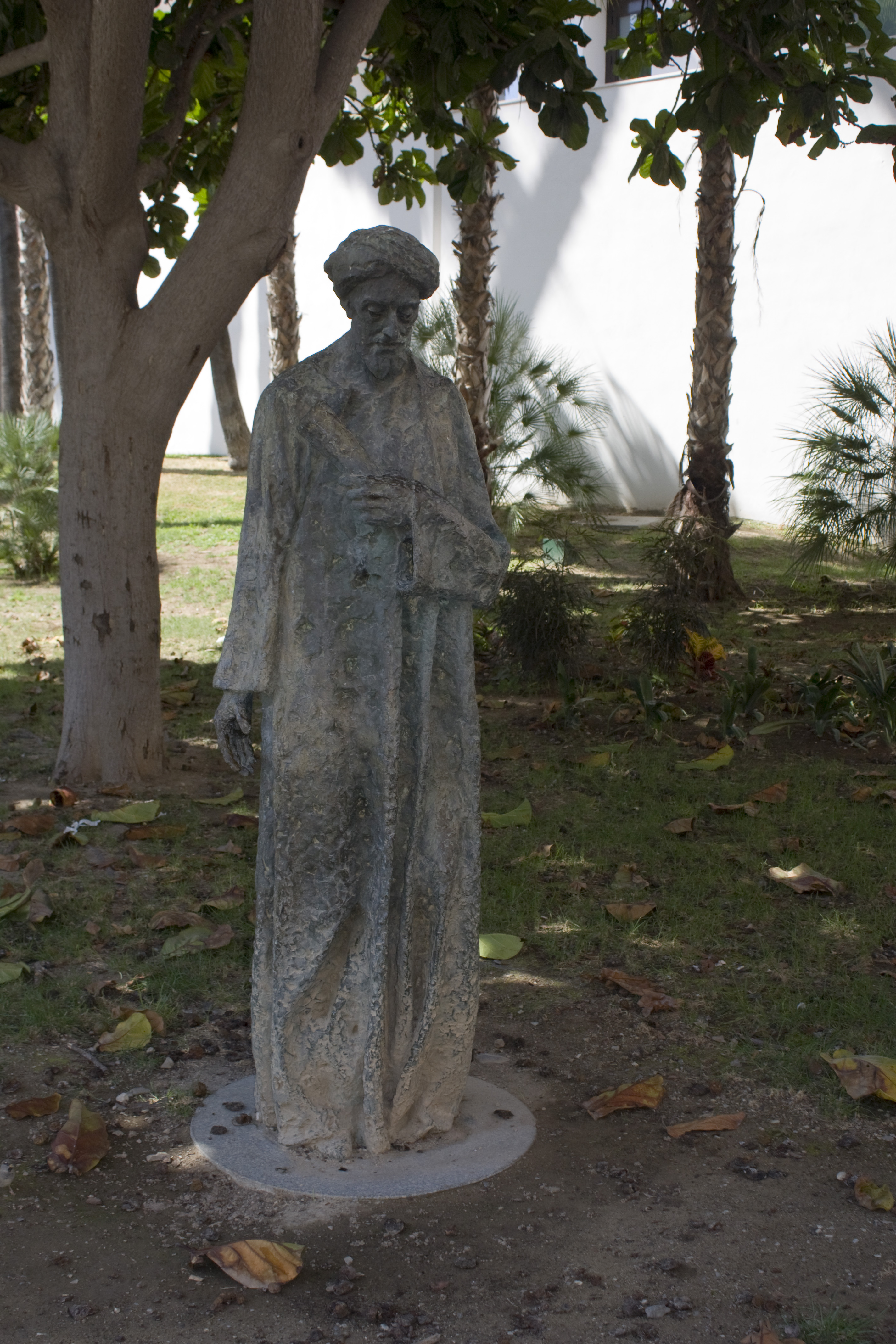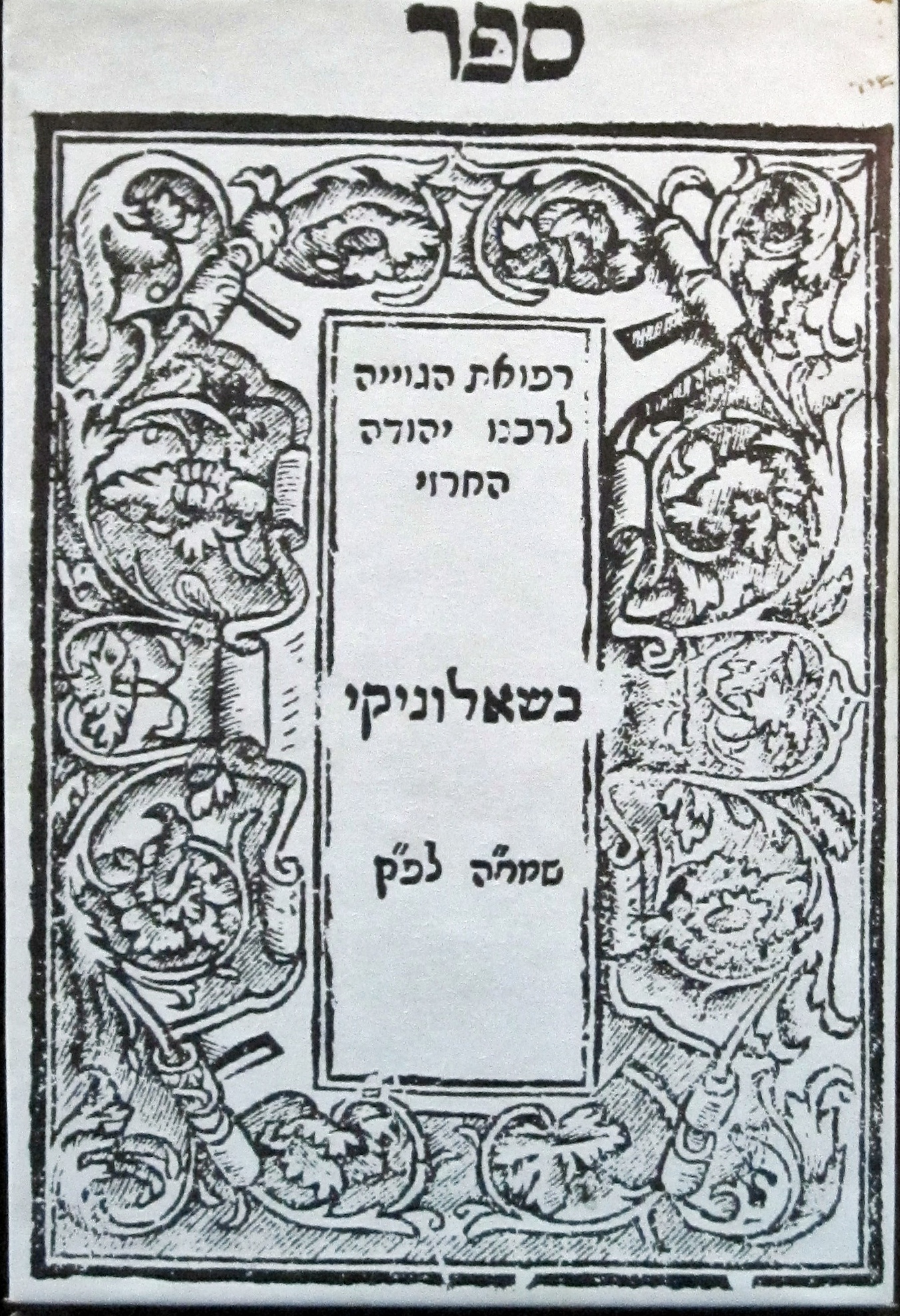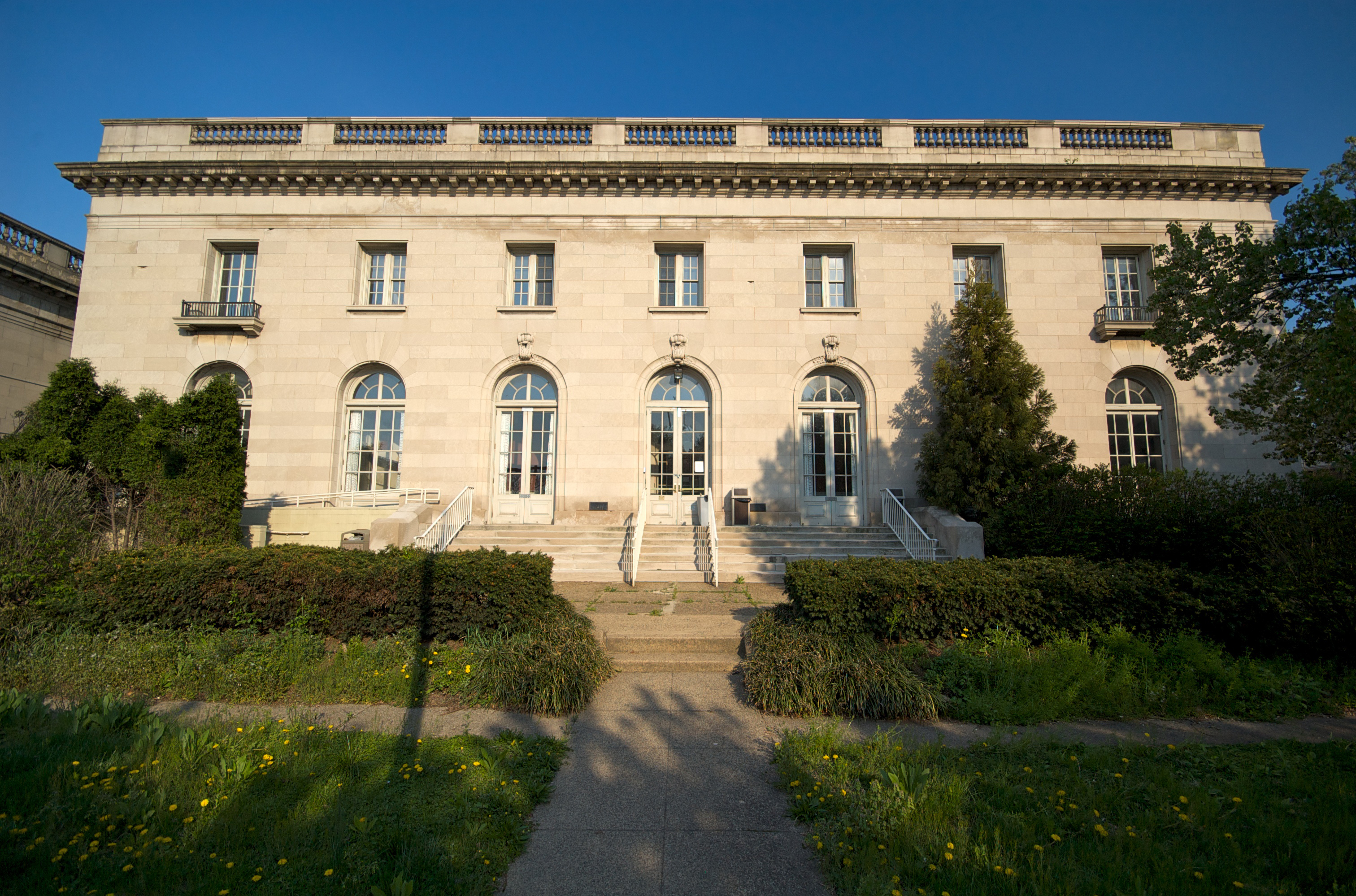|
Riddles Of Dunash Ben Labrat
The riddles of Dunash ben Labrat (920×925-after 985) are noted as some of the first recorded Hebrew riddles, and part of Dunash's seminal development of Arabic-inspired Andalusian Hebrew poetry. Unlike some later Andalusian Hebrew riddle-writers, Dunash focused his riddles on everyday objects in the material world. His writing draws inspiration from the large corpus of roughly contemporary, poetic Arabic riddles Riddles are historically a significant genre of Arabic literature. The Qur’an does not contain riddles as such, though it does contain conundra. But riddles are attested in early Arabic literary culture, 'scattered in old stories attributed to .... The riddles are in the wāfir metre. Manuscripts Riddles plausibly attributed to Dunash are known to survive in three manuscripts: * One in Saint Petersburg Abraham_Firkovitch.html" ;"title="resumably in the collections of Abraham Firkovitch">resumably in the collections of Abraham Firkovitch in the National Library of ... [...More Info...] [...Related Items...] OR: [Wikipedia] [Google] [Baidu] |
Pennsylvania University Of Pennsylvania Libraries Halper 317 F 2v
Pennsylvania (; (Pennsylvania Dutch: )), officially the Commonwealth of Pennsylvania, is a state spanning the Mid-Atlantic, Northeastern, Appalachian, and Great Lakes regions of the United States. It borders Delaware to its southeast, Maryland to its south, West Virginia to its southwest, Ohio to its west, Lake Erie and the Canadian province of Ontario to its northwest, New York to its north, and the Delaware River and New Jersey to its east. Pennsylvania is the fifth-most populous state in the nation with over 13 million residents as of 2020. It is the 33rd-largest state by area and ranks ninth among all states in population density. The southeastern Delaware Valley metropolitan area comprises and surrounds Philadelphia, the state's largest and nation's sixth most populous city. Another 2.37 million reside in Greater Pittsburgh in the southwest, centered around Pittsburgh, the state's second-largest and Western Pennsylvania's largest city. The state's ... [...More Info...] [...Related Items...] OR: [Wikipedia] [Google] [Baidu] |
Wâfir
Wāfir (, literally 'numerous, abundant, ample, exuberant') is a meter used in classical Arabic poetry. It is among the five most popular metres of classical Arabic poetry, accounting (alongside ''ṭawīl'', ''basīṭ'', '' kāmil'', and ''mutaqārib'') for 80-90% of lines and poems in the ancient and classical Arabic corpus. Form The metre comprises paired hemistichs of the following form (where "–" represents a long syllable, "u" a short syllable, and "uu" one long or two shorts): :, u – uu – , u – uu – , u – – , Thus, unlike most classical Arabic metres, ''wāfir'' allows the poet to substitute one long syllable for two shorts, an example of the prosodic element known as a ''biceps''. Thus allows ''wāfir'' lines to have different numbers of syllables from each other, a characteristic otherwise only found in '' kāmil'', '' mutadārik'' and some forms of ''basīṭ''. ''Wāfir'' is traditionally represented with the mnemonic (''tafāʿīl'') ' (). History ... [...More Info...] [...Related Items...] OR: [Wikipedia] [Google] [Baidu] |
Yehoshua Hana Rawnitzki
Yehoshua Ḥana Rawnitzki (; 13 September 1859 – 4 May 1944) was a Hebrew publisher, editor, and collaborator of Hayim Nahman Bialik. Biography Yehoshua Ḥana Rawnitzki was born to a poor Jewish family in Odessa in 1859. He began his journalistic career in 1879, by contributing first to ''Ha-Kol'', and then to other periodicals. He was the editor and publisher of ''Pardes'', a literary collection best known for publishing Hayim Nahman Bialik's first poem, "El ha-Tzippor," in 1892. With Sholem Aleichem (under the pseudonym Eldad), Rawnitzki (under the pseudonym Medad) published a series of feuilletons entitled ''Kevurat Soferim'' ("The Burial of Writers"). From 1908 through 1911, Rawnitzki and Bialik published ''Sefer Ha-Aggadah'' ("The Book of Legends") a compilation of aggadah from the Mishnah, the two Talmuds and the Midrash literature. Rawnitzki moved to Palestine in 1921, where he took part in the founding of the Dvir Dvir ( he, דְּבִיר), also known as Dvira ( ... [...More Info...] [...Related Items...] OR: [Wikipedia] [Google] [Baidu] |
Hayim Nahman Bialik
Hayim Nahman Bialik ( he, חיים נחמן ביאַליק; January 9, 1873 – July 4, 1934), was a Jewish poet who wrote primarily in Hebrew but also in Yiddish. Bialik was one of the pioneers of modern Hebrew poetry. He was part of the vanguard of Jewish thinkers who gave voice to the breath of new life in Jewish life. Being a noted essayist and story-teller, Bialik also translated major works from European languages. Although he died before Israel became a state, Bialik ultimately came to be recognized as Israel's national poet. Biography Bialik was born in , Volhynian Governorate in the Russian Empire to Itzik-Yosef Bialik, a scholar and businessman from Zhytomyr, and his wife, Dinah-Priveh. He had one older brother Sheftel (born in 1862) and two sisters Chenya-Ides (born in 1871) and Blyuma (born in 1875). When Bialik was 8 years old, his father died and his mother took him to Zhytomyr to live with his Orthodox grandfather, Yankl-Moishe Bialik. Bialik did not see his m ... [...More Info...] [...Related Items...] OR: [Wikipedia] [Google] [Baidu] |
Solomon Ben Gabirol
Solomon ibn Gabirol or Solomon ben Judah ( he, ר׳ שְׁלֹמֹה בֶּן יְהוּדָה אִבְּן גָּבִּירוֹל, Shlomo Ben Yehuda ibn Gabirol, ; ar, أبو أيوب سليمان بن يحيى بن جبيرول, ’Abū ’Ayyūb Sulaymān bin Yaḥyá bin Jabīrūl, ) was an 11th-century Andalusian poet and Jewish philosopher in the Neo-Platonic tradition. He published over a hundred poems, as well as works of biblical exegesis, philosophy, ethics and satire. One source credits ibn Gabirol with creating a golem, possibly female, for household chores. In the 19th century it was discovered that medieval translators had Latinized Gabirol's name to Avicebron or Avencebrol and had translated his work on Jewish Neo-Platonic philosophy into a Latin form that had in the intervening centuries been highly regarded as a work of Islamic or Christian scholarship. As such, ibn Gabirol is well known in the history of philosophy for the doctrine that all things, including s ... [...More Info...] [...Related Items...] OR: [Wikipedia] [Google] [Baidu] |
Yehuda Alharizi
Yehuda Alharizi, also Judah ben Solomon Harizi or al-Harizi ( he, יהודה בן שלמה אלחריזי, ''Yehudah ben Shelomo al-Harizi'', ar, يحيا بن سليمان بن شاؤل أبو زكريا الحريزي اليهودي من أهل طليطلة, ''Yahya bin Sulaiman bin Sha'ul abu Zakaria al-Harizi al-Yahudi min ahl Tulaitila''), was a rabbi, translator, poet and traveller active in Spain in the Middle Ages (mid-12th century in Toledo? – 1225 in Aleppo). He was supported by wealthy patrons, to whom he wrote poems and dedicated compositions. Life Judah al-Harizi was born in Toledo in the mid-12th century into a family that was originally from Jerez and was educated in Castile. A Hebrew biographer and a contemporary, Ibn al-Sha’ar al-Mawsili (1197–1256), provided the only known physical description of al-Harizi: As was the practice for educated men of the period, he travelled extensively throughout the region, visiting Jewish communities and various cent ... [...More Info...] [...Related Items...] OR: [Wikipedia] [Google] [Baidu] |
Segol
Segol (modern he, סֶגּוֹל, ; formerly , ''səḡôl'') is a Hebrew niqqud vowel sign that is represented by three dots forming an upside down equilateral triangle "ֶ ". As such, it resembles an upside down therefore sign (a because sign) underneath a letter. In modern Hebrew, it indicates the phoneme which is similar to " e" in the English word sound in ''sell'' and is transliterated as an ''e''. In Modern Hebrew, segol makes the same sound as tzere, as does the Hataf Segol ( he, חֲטַף סֶגּוֹל , "Reduced Segol"). The reduced (or ''ħataf'') niqqud exist for segol, patah, and kamatz which contain a shva next to it. Pronunciation The following table contains the pronunciation and transliteration of the different segols in reconstructed historical forms and dialect The term dialect (from Latin , , from the Ancient Greek word , 'discourse', from , 'through' and , 'I speak') can refer to either of two distinctly different types of ... [...More Info...] [...Related Items...] OR: [Wikipedia] [Google] [Baidu] |
Kamatz
Kamatz or qamatz ( he, label=Modern Hebrew, קָמָץ, ; alternatively ) is a Hebrew niqqud (vowel) sign represented by two perpendicular lines (looking like an uppercase T) underneath a letter. In modern Hebrew, it usually indicates the phoneme which is the " a" sound in the word ''spa'' and is transliterated as ''a ''. In these cases, its sound is identical to the sound of ' in modern Hebrew. In a minority of cases it indicates the phoneme , equal to the sound of '. Qamatz Qaṭan, Qamatz Gadol, Ḥataf Qamatz Qamatz Qaṭan vs. Qamatz Gadol The Hebrew of the late centuries BCE and early centuries of the Common Era had a system with five phonemic long vowels and five short vowels . In the later dialects of the 1st millennium CE, phonemic vowel length disappeared, and instead was automatically determined by the context, with vowels pronounced long in open syllables and short in closed ones. However, the previous vowel phonemes merged in various ways that differed f ... [...More Info...] [...Related Items...] OR: [Wikipedia] [Google] [Baidu] |
Hazaj Meter
Hazaj meter is a quantitative verse meter frequently found in the epic poetry of the Middle East and western Asia. A musical rhythm of the same name is based on the literary meter. Hazaj in Arabic poetry Like the other meters of the ''al-ʿarūḍ'' system of Arabic poetry, the basic rhyme unit of hazaj meter compositions is a closed couplet—a ''bayt'' "distich" (literally "tent")—of two hemistichs known as ''miṣrāʿ''s ("tent flaps"). Characteristic of the hazaj meter (in relation to the other ''al-ʿarūḍ'' meters) is its leading iamb, that is, the first two syllables of its prosodic feet are short-long. This syllable pair (the ''watid'', "peg") is then repeated at fixed points along the length of a line, and two variable syllables (the ''sabab'', "guy-wire"s) are "tied" to each instance of it. The hazaj measure is thus nominally tetrasyllabic. Its two common variations are: : In classical Arabic the hazaj is generally used in a dimeter version of four feet. The ... [...More Info...] [...Related Items...] OR: [Wikipedia] [Google] [Baidu] |
Katz Center For Advanced Judaic Studies
The Herbert D. Katz Center for Advanced Judaic Studies at the University of Pennsylvania—commonly called the Katz Center—is a postdoctoral research center devoted to the study of Jewish history and civilization. History The Katz Center is the continuation of two pioneering institutions devoted to advanced research: Dropsie College for Hebrew and Cognate Learning and the Annenberg Research Institute. Dropsie College was the first accredited doctoral program in Judaic studies in the world. The Annenberg Research Institute was a center for advanced study in Judaism, Christianity, and Islam founded in 1986 with staff and collections carried over from Dropsie College. The founding director of the Katz Center was David B. Ruderman. The current Ella Darivoff Director is Steven Weitzman. The Katz Center was established in 1993 as a part of the School of Arts and Sciences at the University of Pennsylvania. It was first named the Center for Judaic Studies (CJS); later, the Center fo ... [...More Info...] [...Related Items...] OR: [Wikipedia] [Google] [Baidu] |
Dunash Ben Labrat
Dunash ha-Levi ben Labrat (920/925 – after 985) ( he, ר׳ דוֹנָש הַלֵּוִי בֵּן לָבְּרָט; ar, دناش بن لبراط) was a medieval Jewish commentator, poet, and grammarian of the Golden age of Jewish culture in Spain. He is known for his philological commentary, ''Teshuvot Dunash'', and for his liturgical poems D'ror Yiqra and D'vai Haser. Life Dunash was, according to Moses ibn Ezra, born in Fes, the name ''Dunash'' being of Berber origin. In his youth he travelled to Baghdad to study with Saadia Gaon. On returning to Morocco he wrote many poems and became famous, and there were even poems written about him. He taught grammar and poetry. Hasdai ibn Shaprut, who lived in Córdoba, invited Dunash to Spain. Córdoba was then the center of culture and poetry in the Islamic world, and Hasdai endeavored to bring the best minds there. In Córdoba, Dunash met Menahem ben Saruq, also an important grammarian, though the two did not get along beca ... [...More Info...] [...Related Items...] OR: [Wikipedia] [Google] [Baidu] |
Cairo Geniza
The Cairo Geniza, alternatively spelled Genizah, is a collection of some 400,000 Jewish manuscript fragments and Fatimid administrative documents that were kept in the ''genizah'' or storeroom of the Ben Ezra Synagogue in Fustat or Old Cairo, Egypt. These manuscripts span the entire period of Middle-Eastern, North African, and Andalusian Jewish history between the 6th and 19th centuries CE, and comprise the largest and most diverse collection of medieval manuscripts in the world. The Genizah texts are written in various languages, especially Hebrew, Arabic and Aramaic, mainly on vellum and paper, but also on papyrus and cloth. In addition to containing Jewish religious texts such as Biblical, Talmudic and later Rabbinic works (some in the original hands of the authors), the Genizah gives a detailed picture of the economic and cultural life of the Mediterranean region, especially during the 10th to 13th centuries. Manuscripts from the Cairo Geniza are now dispersed among a number ... [...More Info...] [...Related Items...] OR: [Wikipedia] [Google] [Baidu] |





